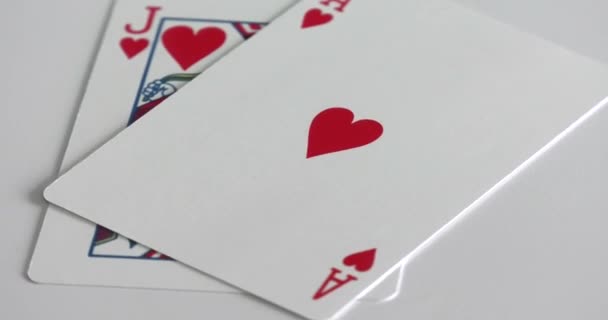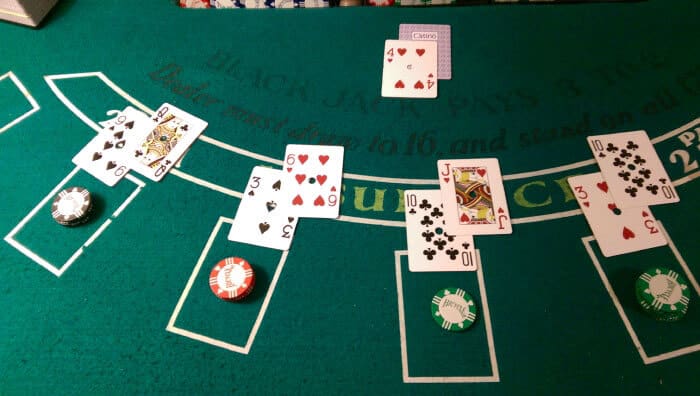Blackjack Twenty One
- Blackjack Or Twenty-one As It Is Frequently Called Is A Popular
- Twenty One Blackjack Card Game
- Twenty One Blackjack Game
Blackjack is a well-known and widely played card game worldwide, but when and where did it come from and how did it evolve into the game known today? This is a quick look through the history of Blackjack and how and why it become one of the most popular games at casinos across the globe.

Origins and twenty-one While it is widely agreed that Blackjack evolved from an earlier, similar game known as twenty-one, the origins of twenty-one itself are somewhat disputed and unknown. Both land-based casinos and online blackjack casinos that support live dealer blackjack require dealers to take at least one more card with the dealer has a soft 17 showing. The dealer will continue taking more cards—until the house’s hand either becomes a hard 17 or higher, or the hand goes over 21 and goes bust.
BlackJack 21 Offline, free casino game style: The best game for Free! Play Las Vegas casino twenty one with the Black Jack 21 Free ( Blackjack card counting ) app! Blackjack 21 Offline Free Casino ( Blackjack card counting ) is a popular casino banking game in the world, also known as twenty-one. If you get 21 points on the player's first two cards ('Blackjack' or 'Natural'), without a dealer.

Origins and twenty-one
While it is widely agreed that Blackjack evolved from an earlier, similar game known as twenty-one, the origins of twenty-one itself are somewhat disputed and unknown. Some historians claim that a version of the game first originated during the Roman era, for which wooden blocks were utilised to denote the numbers involved, although this has never been properly confirmed.
It is believed that twenty-one was first played in casinos in France around the start of the 18th century.
The earliest written reference to a card game named twenty-one is in the Spanish short story Rinconete y Cortadillo by Miguel de Cervantes, which was published in the 1613 collection Novelas ejemplares and believed to have been written between 1601 and 1602.
Cervantes (best known for authoring Don Quixote) was a keen gambler himself, and the story includes two card cheats working in Seville. They are adept at cheating at Veintiuna (Spanish for twenty-one), and the story mentions that the objective of the game is to reach 21 points without going over with Ace cards valued at one or 11.
This indicates that the game was played in the former region of Castile since at least the beginning of the 17th century, with later references in works published in Spain and France appearing to corroborate this. However, exactly how far back the game dates is still largely unspecified to this day.
It is believed that twenty-one was first played in casinos in France around the start of the 18th century. The format of twenty-one used was the French version Vingt-et-un, which featured and combined elements of veintiuna and other popular local card games including Chemin de fer (which was also responsible for the development of Baccarat) and Ferme.
The game grew in popularity to the extent that it was regularly played at the Royal Court during the reign of King Louis XV and other alternative versions began to emerge across Europe. These included Quinze (fifteen) elsewhere in France, Trente-Un (thirty-one) in Spain and Sette e Mezzo (seven and a half) in Italy.
American appeal and the birth of Blackjack
The game of twenty-one first reached North America courtesy of French colonists in the 18th century. It was equally proficient at garnering popularity on the other side of the Atlantic, and was available to play at many gambling halls opened in New Orleans in 1820 that were amongst the first to be legalised in the US.
Casinos began offering a lucrative bonus for literally getting a 'black Jack' card.
The game was elevated to nationwide appeal largely due to Eleanor Dumont, a French woman believed to have immigrated to Nevada City in 1854. A skilled card dealer, she opened a gambling parlour in the city called ‘Vingt-et-un’ and quickly earned a reputation as the “woman dealer”, an extremely rare sight in any gambling establishment at the time that gamblers travelled large distances to see.
Dumont was also nicknamed ‘Madame Moustache’, due to the appearance of a line of dark hair on her upper lip and the flair and extravagance with which she dealt cards. She died in 1879, but casinos continued to grow in both popularity and number into the 20th century, raising the profile of twenty-one further as the rules slowly developed into what is recognised as Blackjack today.
The official point at which Blackjack displaced twenty-one as the name of the game has not been precisely established. It is believed to have emerged around the time of World War I amongst casinos who offered a lucrative bonus payout for players who won a round with an initial hand of the Ace of spades and a ‘black’ Jack (the Jack of clubs or spades). In a sense, the objective was to literally get a ‘black Jack’.
The beginning of Blackjack strategies
Even for a few decades after it was established as Blackjack, it was still predominantly considered a sheer game of chance by many players with no proper studies completed into the probabilities involved.
Several notable works have been published in the field of Blackjack strategy.
The first published mathematically-based attempt to devise an optimal Blackjack strategy was produced by Roger Baldwin, Wilbert Cantey, Herbert Maisel and James McDermott (often referred to as the ‘Four Horsemen of Aberdeen’) in their September 1956 paper The Optimum Strategy in Blackjack, featured in the Journal of the American Statistical Association.
This became the basis of countless future efforts to concoct Blackjack strategies designed to give the player the best possible chance of winning. Amongst these was that devised by Ed Thorp, who used Baldwin's calculations to verify the basic strategy in his best-selling book Beat the Dealer, originally published in 1963 with a version containing an updated Blackjack strategy released in 1966.
As well as outlining blackjack strategies, it was one of the first publications to educate readers in the controversial practice of card counting, whereby they could attempt to measure the number of specific cards left in play during a game and how this affected the potential outcomes for the round.
While a minority of skilled gamblers had been engaging in an early form of card counting since the 1950s, the process was now easily accessible knowledge. In response, casinos increased the number of decks their Blackjack tables used to make card counting harder and trained dealers to spot anyone engaging in it.
Since then, several other notable works have been published in the field of Blackjack strategies and mathematics and the successes people have had in using them, including The Theory of Blackjack by Peter Griffin, Beyond Counting by James Grosjean and The House Advantage by Jeffrey Ma.
Blackjack Or Twenty-one As It Is Frequently Called Is A Popular
Blackjack today
Blackjack has remained a thoroughly popular game into the 21st century. It is still amongst the most widely played both at casinos, many of which now have video-based console versions, and their online counterparts such as Pinnacle Casino, which enable people to play Blackjack any time, any place on hundreds of different games.

In 2002, the Blackjack Hall of Fame was opened at the Barona Casino.
As per many other casino games, there has been a recent abundance of high-profile Blackjack tournaments that regularly feature large prizes of $500,000, $1 million or more for the winner. These include the World Series of Blackjack, the Ultimate Blackjack Tour, the Las Vegas Hilton Million-Dollar Tournament and various World Championships.

In 2002, the Barona Casino in San Diego, California opened the Blackjack Hall of Fame. Inductees include Baldwin, Cantey, Maisel and McDermott, Thorp, Griffin and Grosjean. Amongst the other notable inductees are Don Johnson, who won $15 million from casinos in Atlantic City on Blackjack in 2011, and John Chang, the manager of a Blackjack team comprised of MIT and Harvard students who used card counting to beat casinos at Blackjack worldwide.
Blackjack has also continued to proliferate popular culture with its involvement in the plots of films such as 21, The Gambler and The Hangover, and as of March 2020, there are over 70 million Google search results for the game.
Learn more about Blackjack
If you’re looking for general advice on how to play Blackjack, read our guide to Blackjack. If you want to learn more on how to inform your Blackjack strategy, remember to read our articles on how to double down, split and surrender, alongside how to place a side bet or insurance bet. We also have an article outlining an advanced Blackjack strategy.
Twenty One Blackjack Card Game
Play Blackjack on Pinnacle Casino

Twenty One Blackjack Game
Pinnacle has a wide range of Blackjack games for you to enjoy, including Live Blackjack, Classic Blackjack, Vegas Strip Blackjack and many more!